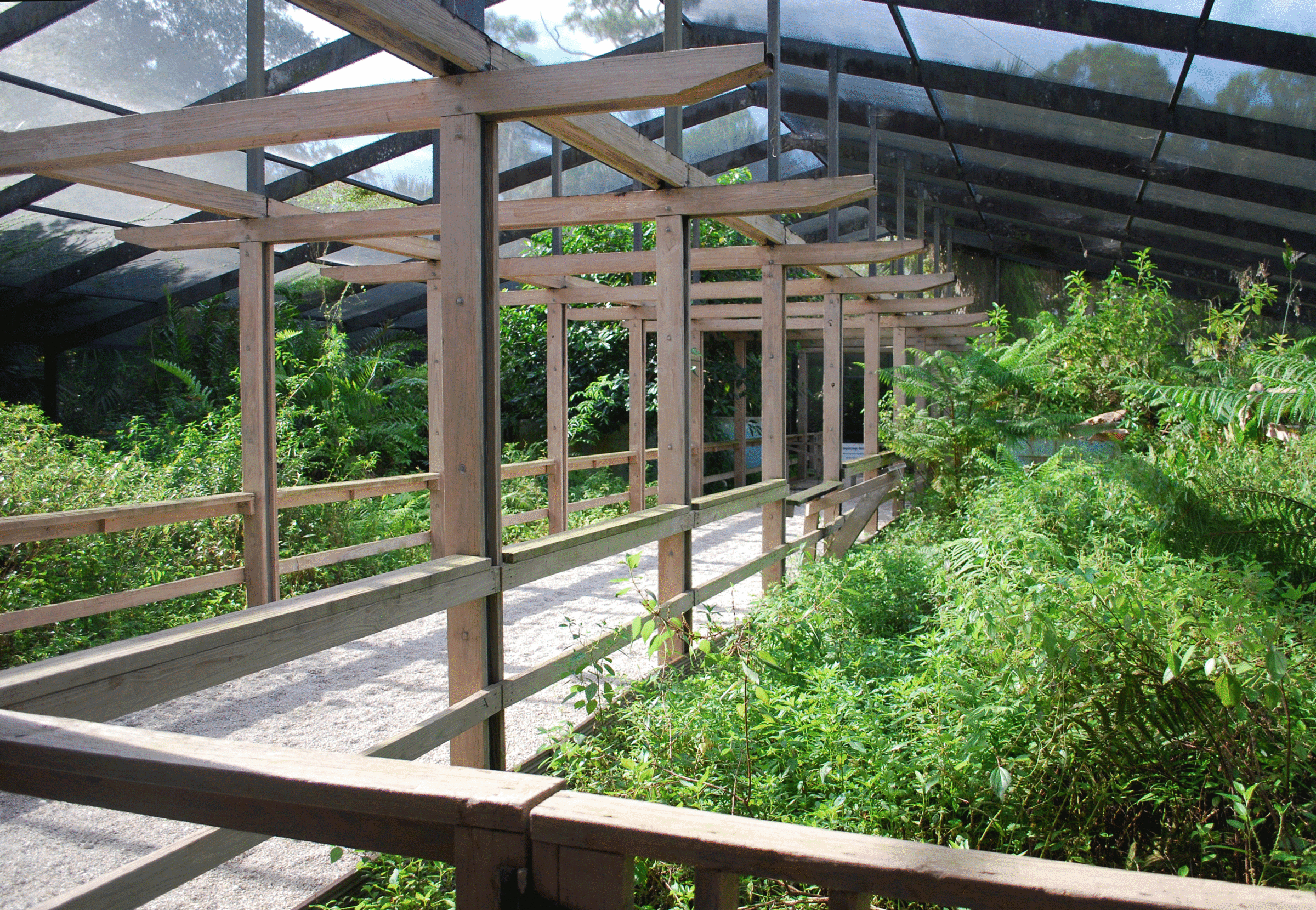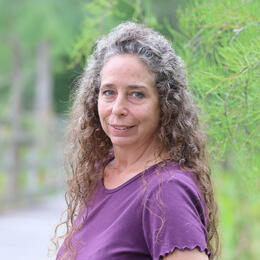THE LIVING MACHINE
Corkscrew Swamp Sanctuary strives to be a good neighbor by setting examples for sustainability and resiliency across its 13,000 acres. As far back as the 1980s, when the boardwalk gained popularity and began receiving as many as 100,000 visitors in a single year, staff were pressed to replace their ordinary septic tank with a sewage system. Our selection? The Living Machine, an innovative system that uses sunlight, bacteria, green plants, and aquatic animals as filtration, mimicking the cleansing functions of wetlands. As one of the very first of such systems ever built, Corkscrew’s Living Machine purifies human waste without additives and recycles 90 percent of the purified water back into the restrooms for reuse in the toilets. As an added benefit, installing this unique system costs substantially less than conventional technology.
REDUCE, REUSE, RECYCLE
Elsewhere in operations, Corkscrew uses solar panels to power part of the Center’s lighting, utilizes green cleaning products, and disposes of less plastic. Roswitha Zeindlhofer-Marold, Retail and Sales Manager for the Blair Audubon Visitor Center at Corkscrew, has taken a lead role in eliminating single-use plastics from their operations: plastic water bottles have been replaced with paper-based “Just Water” bottles with caps made from corn starch, and visitors are offered reusable shopping totes made from recycled bottles and 80 percent post-consumer materials instead of single-use plastic bags.
NATURE STORE STOCKS HANDCRAFTED ITEMS FROM LOCAL ARTISANS
Many visitors come to the Nature Store looking for handcrafted merchandise and items made by local artisans. “Locally-made products provide special meaning to visitors from afar,” says Marold, who also stocks many items made with recycled materials. Locally-grown products require less gas and refrigeration to transport from farm to table, thus resulting in a lower carbon footprint than products that travel great distances to store shelves. One of Corkscrew’s local vendors, Taste of Immokalee, was created by high school students in 2014. A youth entrepreneurship program, Taste of Immokalee empowers students to break the cycle of poverty in one of Florida’s poorest communities. With tomatoes from nearby farms, Taste of Immokalee products, including salsa and barbecue sauce, are currently available for purchase at Corkscrew Swamp Sanctuary.
“We think it is important to offer sustainable products and support local craftsmanship,” says Marold, who reminds visitors that all store sales support Corkscrew’s mission: to conserve and restore natural ecosystems, focusing on birds, other wildlife, and their habitats for the benefit of humanity and the earth’s biological diversity.






